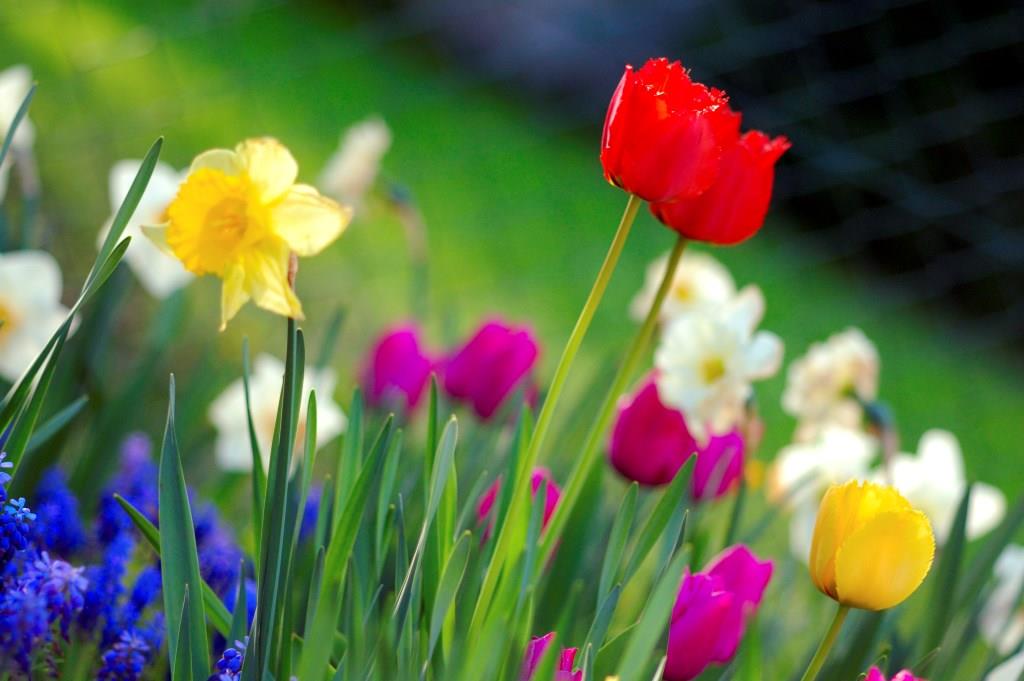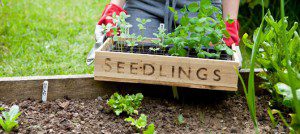What IS a Garden?
By Kevin Revell
People have been gardening and cultivating plants for thousands of years. Ever since communities became settled in the Bronze Age, we have secured boundaries to protect crops and livestock. Perhaps we are no longer economically dependent on our plot of land but we might grow a few fruit and vegetables, or plant some ornamental plants to improve the aesthetic and commercial value of the property.
A garden must have a gardener or it soon becomes something else; plants must be planted and weeds weeded. Gardens furnish our ecological niche with natural beauty, a meeting of the natural and human worlds within the external boundaries of a property allowing the urban or suburban gardener to live close to nature. Selected plants are nurtured while others are discouraged if not altogether eradicated; weeds are a constant threat as nature fights back against the artificial construct. Sometimes a look at a wild meadow or plant community on a woodland floor will make you wonder why we should try to create something better.
Few gardens could be described as entirely natural but we strive to garden with a lighter touch to encourage wildlife, to control less and understand more, to use less chemicals and fertilisers and weed a little less. Increasingly we must cater for the natural world which is fast being squeezed out of the countryside by modern agriculture, urban sprawl and human activity. Then again what exactly is natural? A meadow is only the result of a particular grazing regime. Most woodland is either planted or secondary, having invaded formally cultivated ground. Gardening for wildlife is increasingly popular and few would deny the need to encourage bees and birds but perhaps we need to encompass all that arrives in the garden, pests and all. These are at the base of the food chain and encourage biodiversity; it seems perverse to feed birds in the winter only to starve them of their natural food in the spring and summer. Some see the garden merely as an extension of the house; some property developers take this a little too literally and the recent garden grabbing trend has been blight on our towns and cities as attractive corner plots have disappeared or new houses have sprung up in spacious back gardens.
Front gardens have disappeared under concrete and tarmac to cater for increasing car ownership but at the cost of increased runoff into drains which enter watercourses to exacerbate potential flooding downstream. The patio and decking, trampolines and swing frames cater for the human aspect and enable us to spend time living and relaxing outdoors in the comfort of our own home surrounded by our families and friends but increasing overlooked and disturbed by our neighbours, private quiet time is now hard to come by.
Is Gardening Cool?
Most people who garden would probably not give a fig whether it was or not but it may be important to a younger generation who seem to need the reassurance of acceptability within their peer group or online community before pursuing any new activity. If it were measured in terms of the amount of money lavished by corporate sponsors on the show gardens at the RHS Chelsea Flower Show, we might assume the answer to be a resounding “yes”, but the reality is that these shows have very little to do with day to day gardening and were it not for the disproportionate media coverage we would scarcely be aware of its passing. The activities of Chelsea Football club bear little relation to parks football, though the rules are the same the rewards are vastly disproportionate but enjoyment can be derived from both. The village hall horticultural show probably has more relevance to a larger proportion of the population but is apparently rather un-cool. The perceived wisdom is that an older generation do gardening in a way that is not attractive to the younger generation who are more interested in how plants look and are less concerned with how to look after them.
Few of us today grow our own cut flowers but even these are making something of a comeback as we become aware of the folly of buying supermarket flowers flown in from around the globe. Post-war, it was a necessity to grow fruit and vegetables to keep the family fed. In today’s similarly austere times many have been drawn in by the grow-your-own trend and look to do something healthy for the children. Sustainable healthy living – what’s not to like? What else connects people with nature, provides passive exercise, reduces stress and is good wholesome fun in the fresh air.
Whatever you do in your garden just do something. Make use of the precious resource you have because plenty of people today are denied that chance as space is at a premium and our population continues to grow. A well maintained lawn will encourage members of the family into the garden when the weather is favourable; perhaps some will stay and start to notice their surroundings. How many of us renew our gym memberships while ignoring the vigorous workouts available on our doorstep for free. Go on give it a go – just don’t expect it to be easy – little in this life ever is. It all seems so effortless when you watch the experts grow perfect plants on television and read about them in glossy magazines and aspirational coffee table books but the sad reality is that things often go wrong. We should not expect perfection every time but adopt a more even handed approach, some you win, some you lose – celebrate the small victories but don’t get too hung up on the failures; treat them as lessons learnt in the school of hard knocks and move on, finding out by trial and error what really works. Through experience, knowledge will be gained which builds up over time until you too are an expert charged with passing knowledge on to the next generation. How cool is that?



